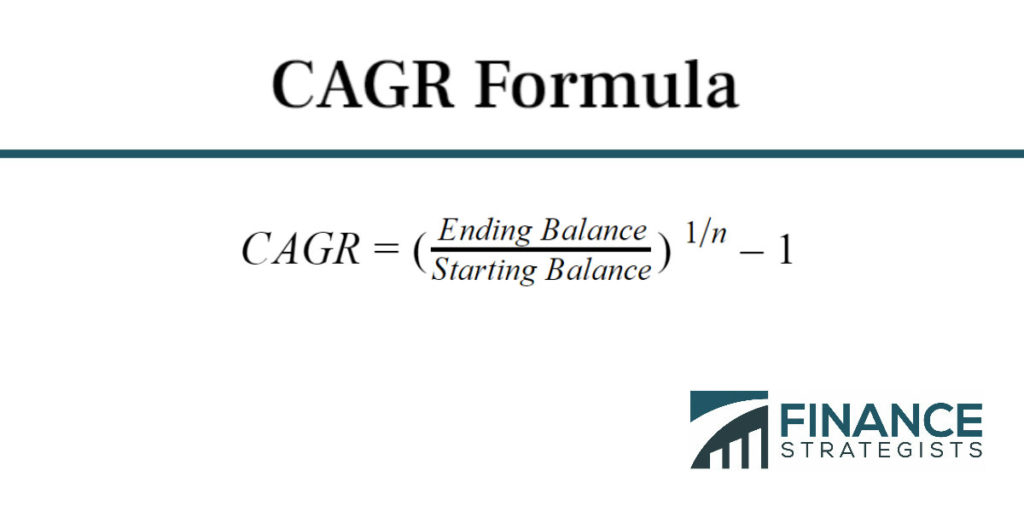Compound annual growth rate (CAGR) is a financial analysis metric that is used to measure the rate of return for an investment over a long period of time. CAGR assumes compounding or the reinvestment of profits into the original asset. In simple words, CAGR provides you with the investment's value if it produced steady annual returns and if all profits were reinvested back into the original asset for the duration of the investment. The formula to calculate CAGR is: Where n = time period of investment. As an example, suppose that you invest $5,000 into stocks for four years. At the end of that time period, you cash out your investments for $6,000. Then your rate of return is as follows. CAGR = (6000/5000)1/4 - 1 = 4.66% . This means that your original investment of $5,000 produced returns of 4.66% over the four-year period. CAGR is especially useful to calculate the rate of returns for investments over a long duration because it provides investors with a single return figure for that period. The opposite of CAGR is average annual rate, where an annual rate of return is calculated separately for each year and averaged out to arrive at a figure. CAGR is also useful to compare returns at a glance between two unrelated assets. For example, suppose you invest the earlier $5,000 into a real estate holding that grows to a $10,000 valuation after four years. Using the same formula outlined earlier, the rate of return for your real estate investment is 118.9%. Besides calculating investment returns, the CAGR formula can also be used for other purposes. Some of them are: Calculating the performance of two uncorrelated entities or departments within an organization. Estimating returns required to successfully reach a desired profit or investment target. It is important to remember that CAGR is an approximation of the rate of return and does not represent the actual rate of return for each investment instrument. The drawback to CAGR is that it does not take into account volatility of the underlying investment. In the earlier example, the stock market may have produced consistent and predictable returns in comparison to the real estate market during those four years. But the final CAGR values do not reflect the underlying volatility. It is also possible to misrepresent returns for an asset by highlighting its CAGR returns only for a favorable period of time. For example, a fund may claim that it has returned 50% over three years with data that is a decade old. But when CAGR is calculated for the most recent three years, the same funds demonstrate returns of 10%.Compound Annual Growth Rate Definition
CAGR Formula

CAGR Example
CAGR Calculation
CAGR Meaning
Compound Annual Growth Rate (CAGR) FAQs
CAGR stands for Compound Annual Growth Rate.
Compound annual growth rate (CAGR) is a financial analysis metric that is used to measure the rate of return for an investment over a long period of time.
CAGR does not take into account volatility of the underlying investment. It is also possible to misrepresent returns for an asset by highlighting its CAGR returns only for a favorable period of time.
CAGR is especially useful to calculate the rate of returns for investments over a long duration because it provides investors with a single return figure for that period.
The opposite of CAGR is average annual rate, where an annual rate of return is calculated separately for each year and averaged out to arrive at a figure.
True Tamplin is a published author, public speaker, CEO of UpDigital, and founder of Finance Strategists.
True is a Certified Educator in Personal Finance (CEPF®), author of The Handy Financial Ratios Guide, a member of the Society for Advancing Business Editing and Writing, contributes to his financial education site, Finance Strategists, and has spoken to various financial communities such as the CFA Institute, as well as university students like his Alma mater, Biola University, where he received a bachelor of science in business and data analytics.
To learn more about True, visit his personal website or view his author profiles on Amazon, Nasdaq and Forbes.











